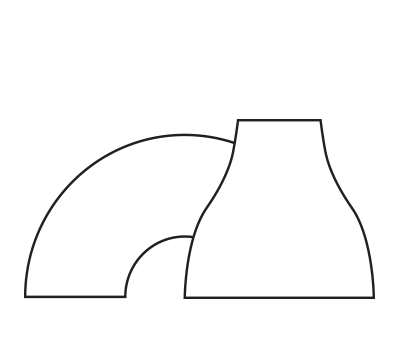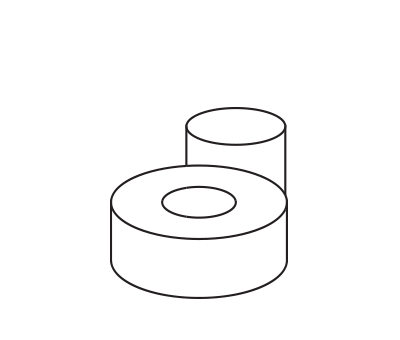1.4361
- UNS S30600
- X1 Cr Ni Si 18-15-4
- F46
Applications :
- Mineral chemistry :Production of concentrated HNO3
- Organic chemistry :Use of concentrated HNO3 (nitration)
- Nuclear industry :Evaporator working in nitric environment, to concentrate products of fusion
- Metallurgical industry :Tanks – equipment destined for nitrogen sulphite mixtures
- Chemical industry :Chrome sulphite mixtures, very oxyding solutions
A strong addition of silicon to austenitic stainless steels of the 18/10 type has a favourable influence on resistance to transpassive intergranular corrosion. This type of corrosion develops particularly in very concentrated nitric environments (> 90 %) up to boiling point, also in strongly oxydising nitric environments (oxidising ions present such as : hexavalent chromium, pentalivalent vanadium – ferritic salts etc…)1.4361 has a chemical composition adapted to work in the transpassive zone. It resists perfectly to intergranular corrosion.
Mechanical Properties
| Tensile strength: | 530-730 | N/mm² |
| Yield strength 0,2% : | 210 | ≥ N/mm² |
| Elongation: | 40/30 | ≥ % |
| Hardness Brinell: | 230 | ≤ HB |
Chemical Composition
Carbon
C
0,015% max
Silicon
Si
3,7-4,5% max
Magnese
Mn
2,00% max
Phosphorus
P
0,025% max
Sulphur
S
0,005% max
Chromium
Cr
16,5-18,5% max
Nickel
Ni
14-16% max
Nitrogen
N
0,035% max
Heat Treatment
1100/1150°C (2010/2100°F) -cooling in water (holding time 1 to 2 min. per mm of plate thickness oxidising environment).
- 98% at room temperature /Corrosion rate : Pratically non existent
- 98% boiling / Corrosionr rate ≤ 0.20mm/year
- 28% boiling + 1g/l of hexavalent chrome /Corrosion rate : ≤ 0.30mm/year
- 28% boiling + 1g/l of trivalent chrome / Corrosion rate :≤ 0.30mm/year with no trace of intergranular corrosion
Welding 1.4361 requires well qualified welders. It is carried out both TIG and MIG processes (recommended technique) with our welding filler metal and under inert gas protection. Arc extingnishess are indispensable to avoid craters. It is also necessary to adapt speed and compatible amperage in order to limit the temperature between passes.
Heat treatment after welding is not necessary. For very severe conditions of use, it could be advisable. However, pickling after welding is necessary and then continue immediately with a passivation treatment.
Marking
All material will be marked as follow:
- Manufacturer’s name
- Material grade
- Size
- Heat Number
Certification
Material will be delivered with certificate EN 10204 3.1
Other Nitric Acid grades
| EURONORM/DIN | WERKSTOFF NR. | AISI | UNS | BRAND NAME |
|---|---|---|---|---|
| X1 CrNiSi 18-15 | 1.4361 | (F46) | S 30600 | URANUS S1 ® |
| X1 Cr Ni 25-21 | 1.4335 | 310L | S 31002 | URANUS 65 ® 2RE10 ® |







